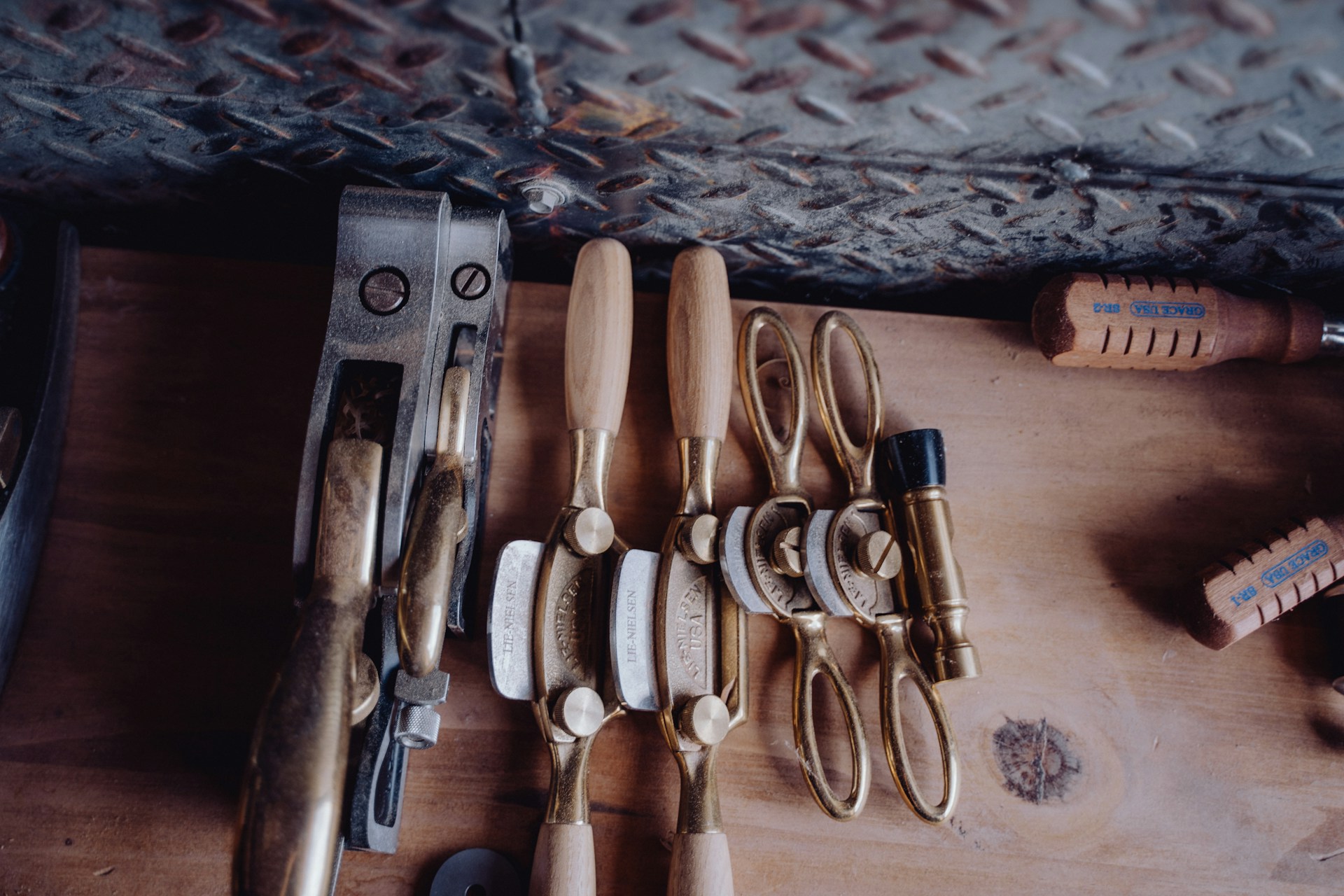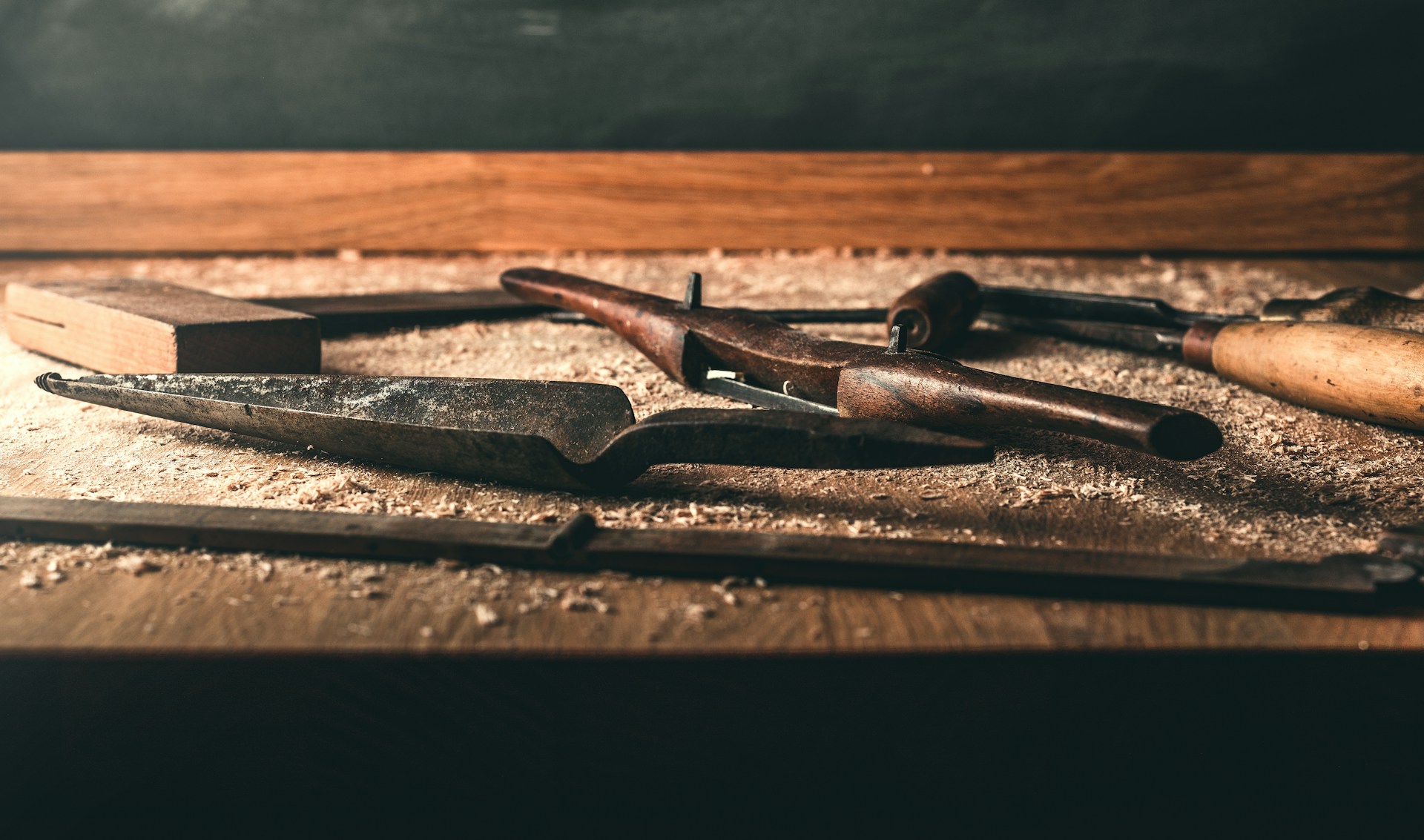Woodworking techniques for advanced crafters: Taking Your Craft to the Next Level
Woodwork has been an admired art since very ancient times—be it from the very intricately carved ancient furniture to sleek, modern designs of today. It keeps amazing those who enjoy creating with their hands. It’s not about mere mastery of the basics; rather, it encompasses even the most advanced crafter who, for one reason or the other, may want to go out of his or her way, trying new techniques and making pieces that are functional as well as beautiful. In this article, a few advanced techniques of woodworking will be discussed to help one further their craftsmanship. Whether it’s honing your skills or trying to explore new avenues of creativity, the following tips and tricks will definitely get you working on something that’s quite out of the ordinary.
Take Your Woodworking to the Next Level! Build 16,000 Woodworking Projects With Step-By-Step Plans
1. Mastering Joinery: The Foundation of Woodworking Techniques for Advanced Crafters

Joinery is the heart of woodworking, essentially holding your pieces together. To higher-order craftsmen, the perfect complicated joinery is to die for. While beginners may be allowed simple butt joints or pocket screws, advanced woodworkers pride themselves on their dovetail joints, mortise and tenon joints, and box joints.
- Dovetail Joints: The dovetail joint is powerful and handsome, probably the unmistakable feature of fine furniture. These take a bit more precision and patience, but the joint that one comes away with is as strong as it will be beautiful to the eye. Try a dovetail jig for perfect accuracy or really challenge yourself to cut them by hand for that true touch of authenticity.
- Mortise and Tenon Joints: In general, mortise and tenon joints are classic, adaptive, and mighty. That said, they make great chairs, tables, frames, and everything between. The more advanced craftsmen among them will like to put the through-tenons, wedged tenons, or even drawbore tenons to test—stronger options that add strength and sometimes visual interest to the joint.
- Box Joints: Finger joints are perfect to create ultra-strong corners in boxes and drawers. If your table saw is tuned right or you have a dedicated box joint jig, you can expect tight, seamless joints that are as functional as beautiful.
If you want to learn more about joinery, this comprehensive guide will walk you through step-by-step tutorials and tips contributed by advanced woodworkers.
2. Curved Woodworking: Defining Your Creation
Though many places make do with just straight lines and right angles, it’s curves that add the grace to the job. The advance artisan makes much use of this method when constructing continuous organics which become eye-catching features.
- Bent Lamination: This technique involves glue-up together thin strips of wood and subsequent bending around the form, well usable for several cases—just ideal to create chair back sides and table arched legs—or sometimes just for purely decorative elements like felled moldings. Success involves having flexible species of wood and well-balanced pressure in a glue-up of wood parts.
- Steam Bending: Steam makes the wood fibers soft; hence, the result from this method will yield more dramatic curves compared to the previously discussed method, since it can let woods bend in incredible forms. This is quite common when making rocking chairs, boat frames, and different types of musical instruments.
- Hand Cutting Curves: Much expertise and patience are needed, but it is often well worth the time taken. From sculptural pieces to simply a flair for the decoration of a table leg, carving allows complete latitude with regard to design for the maker.
Whether you want to learn how to work with curved woodworking or prefer to get started with step-by-step instructions and expert advice, Build 16,000 Woodworking Projects With Step-By-Step Plans will be your guide.
3. Inlay and Marquetry: The Art of Decorative Woodwork
Among the general techniques of embedding pieces of wood, metal, and other materials into the surface and setting them together for complicated patterns and designs, there exist such arts as inlay and marquetry. It would be proper for such art techniques as inlays and marquetry to give class to furniture, boxes, and even wall artworks.
- Inlay: The method involves the cutting of a cavity in the wood and filling it with a contrasting material. The inlays most commonly used are exotic woods, mother-of-pearl, and metal. Advanced craftsmen will make experiments in geometric patterns, floral motifs, or of their own designs.
- Marquetry: As with inlays, marquetry is a process wherein a picture or design is assembled from sections of veneer. This becomes a fine surface, somewhat as mosaics can make even everyday furniture look as if it belonged in a masterpiece.
Both call for patience and painstaking precision, but when done well, the result can be unique and individual—the hallmark of true craftsmanship and genius. If interested in the specific peculiarities of different techniques of decoration, refer to this detailed guide with steps below with detailed descriptions and photos.
4. Advanced Finishing Techniques: Bringing Your Work to Life
The finish brings life into the project. For an advanced craftsman, not about protection, the finish serves only to bring out the wood’s natural beauty and to feel great to the touch.
- French Polishing: It is the traditional method of application wherein the shellac is applied with the help of a pad. This method gives an extremely brilliant, high-gloss mirror finish. It is time-consuming, very labor-intensive, and hence very good for fine furniture.
- Grain Filling: In this step, the open-grained woods like oak and mahogany are flattened. The commercial grain filler will be used or it can also be made by your own using the pumice and shellac.
- Distressing and Antiquing: The finer the craftsmanship, the better the pieces can be distressed for that rustic or antique look, either by artificially inducing wear and tear or applying a dark glaze to bring out the details. These will add character and depth to your pieces.
- Spray Finishing: Invest in a spray system to get a smooth, professional finish. You can apply lacquer, polyurethane, or paint with very minimal brush marks and/or streaks.
If perfecting the finish is what interests you most, 16,000 Woodworking Projects With Step-By-Step Plans offers great tips and expert recommendations for finding the right product to get that perfect finish.
5. Designing and Building Custom Furniture

Designing and making your own custom furniture is the most daunting task, fitting only for a confident craftsman. This is now the moment when everything—carving, joining, and finishes—come into one final woodwork piece that is basically a reflection of your very own, individual sense of design.
- Design and Planning: First, one should do some detailed sketching and planning, keeping in mind proportion, functionality, and aesthetic of your piece. More advanced craftsmen would use CAD software in designing highly accurate designs and visualizations of the finished product.
- Material Selection: Quality materials enhance your design. Exotic woods, reclaimed lumber, or even mixed media add interest and character to your furniture.
- Attention to Detail: The beauty in a custom furniture piece is in the details—from hand-carved accents down to custom hardware. Each element has been considered and executed with thought.
- Testing and Prototyping: Before committing to your final piece, consider making a prototype. You’ll have the chance to test a design, make adjustments, and make sure everything fits together perfectly.
This will be quite an enlightening, informative, and motivational manual that will aid in making the dream a reality once this challenge has been taken into account. For more insights, check out this guide Build 16,000 Woodworking Projects With Step-By-Step Plans.
6. New Tools and Technologies to Try
To know what new tools and technologies are in an advanced stage opens a lot of possibilities out there that one as a crafter could apply. One may work more precise and creative when it comes to new CNC machines or laser engraving.
- CNC Machines: This class of computer-controlled power tool will grant you the ability to make very complex designs and patterns with incredible accuracy. They will be ideal for repetitive tasks, complex shapes, or any other detailed carving.
- Laser Engravers: A laser engraver leaves a personalized touch in your project—a name, a design, or even a photograph. The laser engraving will take the job to an altogether different dimension.
- High-Quality Hand Tools: Never underestimate the power of a good quality hand tool. Chisels, planes, and saws by branded companies really make quite a difference in craftsmanship.
This resource covers reviews, recommendations, and tutorials on the latest tools and technologies available to advanced woodworkers and how to use the technology intelligently. For more information, visit this link Build 16,000 Woodworking Projects With Step-By-Step Plans.
Conclusion: The Mastery Journey
This will be the lifetime learning curve in woodwork, since mastery to the advanced goes way beyond perfecting the skill but is actually in the creativity, passion, and fulfillment brought about by bringing your ideas to life. Advanced techniques that one could learn on his path to creating an inlay, curved, and decorative inlay really pushed the boundary as to what could be made from such techniques and came out really unique.
The path to perfection combines all: remembrance, practicing over and over again, patience, and open-minded desire to learn. Every given project of new furniture finishing or designing is some occasion of growth for every woodworker; hence, if needed, do not lose a chance at expert guidance or missing inspirational inspiration drawn from this incomparable resource brimming with valuable tips, instructions, and means relevant for the advanced woodcrafter.
Take Your Woodworking to the Next Level! Build 16,000 Woodworking Projects With Step-By-Step Plans
Related Reviews:
Can You Make Money Selling Woodworking Projects?
What Woodworking Project is Most Profitable?
How to Make Money Fast with Woodworking?
What is the Highest Paid Woodworker?
Is Woodworking a Good Business to Start
What is the Best Platform to Sell Woodworking Projects?
How to Sell Wooden Items Online?
Woodworking Related Topics And Tags: Woodworking techniques for advanced crafters, Woodworking techniques for advanced crafters, advanced woodworking tips, joinery techniques for woodworking, curved woodworking methods, inlay and marquetry techniques, custom furniture design, wood finishing techniques, advanced woodworking tools, expert woodworking skills, creative woodworking projects, Woodworking techniques for advanced crafters
